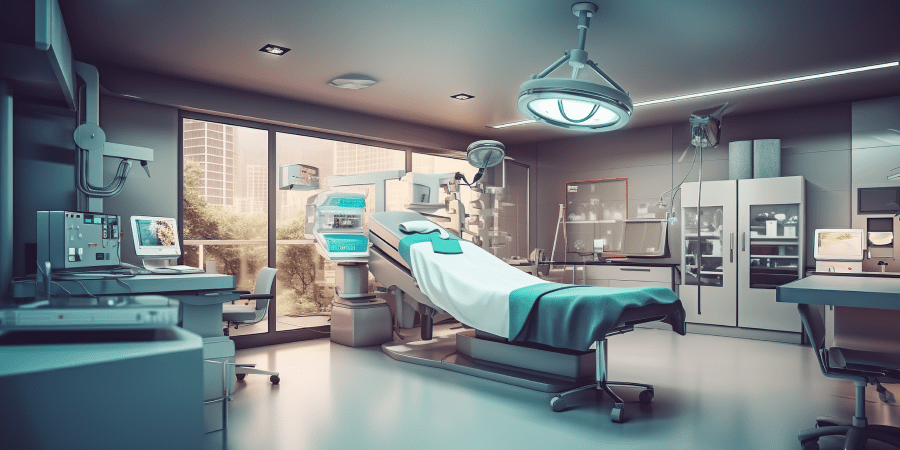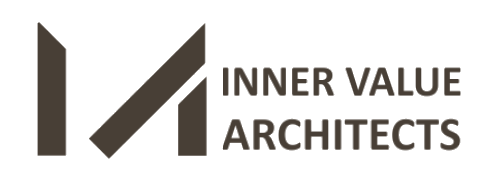In today’s world, we’re all looking for ways to be...
In the intricate web of healthcare, where every detail matters, the design of hospital environments emerges as a critical determinant of patient safety and well-being. Among the myriad challenges that healthcare facilities grapple with, the prevention and control of infections stand out as paramount concerns. Hospital-acquired infections (HAIs) not only compromise patient outcomes but also strain healthcare resources and undermine public trust. In this context, the impact of hospital design on infection control and prevention assumes profound significance. Traditional hospital layouts, characterized by densely populated wards and shared spaces, have long been associated with elevated risks of pathogen transmission.
However, as the understanding of infectious disease dynamics evolves and technological innovations proliferate, a paradigm shift is underway in healthcare architecture. In this blog, we delve into the innovative approaches and the profound impact that hospital design has on combating infections, thereby revolutionizing the healthcare landscape. Join us as we navigate the intricate intersection of design and healthcare, uncovering the transformative potential of innovative hospital design in the ongoing battle against infectious diseases.
Understanding the Challenge
Hospital-acquired infections (HAIs) pose a significant threat to patient safety, often resulting from a combination of factors such as overcrowding, inadequate ventilation, contaminated surfaces, and lapses in hygiene practices. Traditional hospital layouts, characterized by shared spaces and multi-bed wards, exacerbate the risk of cross-contamination, making it challenging to contain the spread of infections. Moreover, the emergence of antimicrobial-resistant pathogens adds another layer of complexity to the challenge, necessitating innovative solutions that address both existing and evolving threats. By comprehensively understanding the multifaceted nature of the challenge, healthcare professionals can devise effective strategies to mitigate the risk of HAIs and promote a culture of infection prevention.
The Shift Towards Innovative Hospital Design
Recognizing the critical role of physical environments in infection control, healthcare architects and designers are pioneering innovative approaches to hospital design. These approaches prioritize patient safety, staff well-being, and the prevention of infections. Key elements of innovative hospital design include:

1. Optimized Layouts
Modern hospital designs prioritize streamlined layouts to mitigate the risk of cross-contamination effectively. By strategically placing patient rooms, treatment areas, and support spaces, architects aim to optimize workflow efficiency while bolstering infection control measures. This strategy for healthcare setting minimizes unnecessary patient movement, reducing the likelihood of pathogen transmission between different areas of the hospital. Additionally, clear delineation of clean and contaminated zones, coupled with efficient circulation pathways, further enhances infection prevention efforts. Such meticulous attention to layout design not only enhances patient safety but also promotes the seamless delivery of care, ensuring that healthcare facilities remain resilient against the threat of healthcare-associated infections.
2. Single-Patient Rooms
The widespread adoption of single-patient rooms stands out as a transformative innovation in hospital design, revolutionizing the landscape of infection control and prevention. Unlike traditional multi-bed wards, single-patient rooms provide patients with enhanced privacy and isolation, creating a barrier against the spread of infections. By limiting the number of individuals sharing a confined space, the risk of cross-contamination between patients is greatly minimized. Furthermore, single-patient rooms facilitate more personalized care and promote a healing environment conducive to patient recovery. This shift towards individualized accommodations not only enhances infection control efforts but also underscores the commitment of healthcare facilities to prioritize patient safety and well-being.
3. Enhanced Ventilation Systems
Good ventilation is essential for maintaining clean air and minimizing the spread of germs in places such as hospitals. Special ventilation systems equipped with High-Efficiency Particulate Air (HEPA) filters and Ultraviolet (UV) lights excel at removing tiny germs like bacteria and viruses from the air. These systems play a vital role in ensuring that the air remains as clean as possible, thereby contributing to the overall health and well-being of patients, staff, and visitors. By partnering with a reputable healthcare architecture firm in India, hospitals can ensure that they have access to the best ventilation systems tailored to their specific needs and in compliance with local regulations. This collaboration ensures that hospitals maintain optimal air quality standards while adhering to relevant guidelines, ultimately promoting a safer and healthier environment for all.
4. Antimicrobial Surfaces
Surfaces within healthcare environments serve as breeding grounds for pathogens, presenting an ongoing challenge for infection control efforts. However, by integrating antimicrobial materials and finishes into hospital design, the proliferation of harmful microorganisms can be significantly reduced, thus enhancing overall cleanliness and hygiene standards. These antimicrobial surfaces are specifically engineered to inhibit the growth and spread of bacteria, viruses, and other pathogens upon contact, thereby minimizing the risk of surface-mediated transmission. From countertops and door handles to flooring and furniture, the incorporation of antimicrobial materials throughout healthcare facilities helps create environments that are inherently more resistant to contamination.
5. Modular Construction
Modular construction simplifies building processes by creating components off-site and assembling them on location, resulting in cost savings, faster project completion, and increased convenience. In terms of infection prevention, modular units are invaluable because they can swiftly respond to surges in patient numbers during disease outbreaks. These units are meticulously designed with infection control in mind, featuring special surfaces, improved air systems, and methods to isolate sick individuals. Moreover, their modular nature allows for easy adjustments and expansions, enabling hospitals to meet evolving patient needs while maintaining safety standards. Overall, modular construction offers a practical solution for healthcare facilities to efficiently manage infections while ensuring the well-being of patients, staff, and visitors.
The Impact on Infection Control Prevention
The integration of innovative design strategies into healthcare facilities yields tangible benefits in infection control and prevention:

1. Reduced Transmission Rates
Innovative hospital designs play a pivotal role in minimizing opportunities for pathogen transmission. Key features such as single-patient rooms, optimized layouts, and antimicrobial surfaces are instrumental in mitigating the spread of pathogens within healthcare facilities. Single-patient rooms offer enhanced privacy and isolation, reducing the risk of cross-contamination between patients. Optimized layouts strategically position treatment areas and support spaces, facilitating efficient workflows while minimizing the potential for pathogen transmission. Additionally, the integration of antimicrobial surfaces and finishes helps to inhibit the proliferation of harmful microorganisms on frequently touched surfaces, further enhancing infection control measures.
2. Improved Patient Outcomes
With enhanced infection control measures implemented through innovative hospital design, patients experience significantly improved outcomes across various metrics. Shorter hospital stays, fewer complications, and reduced mortality rates are among the notable benefits observed. The integration of advanced and latest architectural concepts ensures better indoor air quality, minimizing the risk of airborne pathogen transmission and promoting respiratory health. Modular construction techniques provide flexibility and rapid response capabilities, enabling healthcare facilities to adapt quickly to evolving patient needs and emergency situations. Additionally, other design innovations such as single-patient rooms and antimicrobial surfaces create a safer and healthier environment conducive to optimal healing and recovery.
3. Enhanced Staff Safety
Healthcare workers operating within facilities designed for infection control experience a myriad of benefits, chief among them being improved workplace safety. By minimizing exposure to infectious pathogens, these innovative designs significantly reduce the risk of occupational infections among staff. As a result, healthcare workers enjoy a safer working environment, which not only enhances their physical well-being but also contributes to higher morale, productivity, and retention rates within the healthcare workforce. With reduced concerns about personal safety and health risks, staff members can focus more effectively on delivering high-quality care to patients, fostering a positive work culture and ultimately improving the overall quality of healthcare delivery.
4. Cost Savings
The investment in innovative hospital design yields substantial cost savings in the long run, offering a compelling economic justification for embracing these advancements. By effectively preventing healthcare-associated infections (HAIs) and their associated complications, healthcare facilities can mitigate the financial burden of extended hospital stays, additional treatments, and readmissions. Furthermore, the efficient utilization of resources and streamlined workflows enabled by innovative design strategies further contributes to cost containment efforts. Through optimized layouts, modular construction, and other design innovations, hospitals can maximize operational efficiency while minimizing unnecessary expenditures.
5. Resilience Against Outbreaks
Hospitals equipped with modular construction capabilities are undoubtedly better prepared to respond effectively to infectious disease outbreaks and other emergencies. The ability to rapidly deploy prefabricated units enables healthcare facilities to expand their capacity swiftly and efficiently in response to surges in patient demand. This flexibility ensures that healthcare systems can scale up their operations without compromising infection control standards or the quality of care provided to patients. Moreover, modular construction allows for the creation of specialized units, such as isolation wards or temporary treatment centers, tailored to the specific needs of managing infectious diseases.
Partner With Experts to Build Ultimate Hospital Design
The impact of hospital design on infection control and prevention cannot be overstated. Through innovative approaches healthcare facilities can effectively mitigate the spread of pathogens, ultimately improving patient outcomes and enhancing overall safety. By prioritizing infection control principles and embracing cutting-edge design solutions, healthcare facilities can create environments that are not only conducive to healing but also resilient in the face of infectious disease threats. As hospitals continue to evolve to meet the challenges of the modern healthcare landscape, consulting with a healthcare architecture firm like Inner Value Architect can prioritize infection control amidst evolving healthcare challenges. By collaborating with experts, hospitals can navigate the complexities of infection control and prevention, ensuring the highest standards of safety, efficiency, and quality of care for all stakeholders involved.










